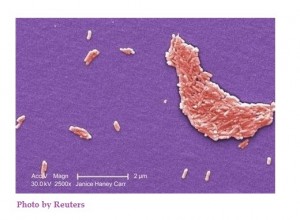 Salmonella bareilly gram negative rod source of raw scraped ground yellowfin tuna.
Salmonella bareilly gram negative rod source of raw scraped ground yellowfin tuna.
FDA reports:
Moon Marine USA Corporation voluntarily recalls frozen raw yellowfin tuna product
“Nakaochi Scrape” associated with a multistate outbreak of Salmonella Bareilly infections
- April 17, 2012 UPDATE:Moon Marine USA Corporation (also known as MMI) of Cupertino, Calif., is voluntarily recalling all frozen raw yellowfin tuna product from India, labeled as Nakaochi Scrape AA or AAA. Nakaochi Scrape is tuna backmeat, which is specifically scraped off from the bones, and looks like a ground product.
- The product is not available for sale to individual consumers, but may have been used to make sushi, sashimi, ceviche and similar dishes available in restaurants and grocery stores.
- The company name and Nakaochi Scrape AA or AAA were printed on boxes of the product when it was initially sold to distributors. However, the boxes may have been broken into smaller lots for further sale and may not be available to the end retailer or consumer. Therefore, the tuna may not be readily identifiable by retail outlets or by consumers as being from the implicated lots.
- The Nakaochi Scrape AA and AAA from MMI was sold through distributors to restaurants and grocery stores that make sushi, and has been linked to the ongoing outbreak of SalmonellaBareilly, which has caused 116 illnesses in 20 states and the District of Columbia to date.
- Many of the people who became ill reported eating raw tuna in sushi as “spicy tuna.”
- If you purchase “spicy tuna” or other sushi, sashimi, ceviche, or similar dishes that might contain Nakaochi Scrape from a restaurant or grocery store, check with the establishment to make sure that it does not contain raw recalled product from Moon Marine USA Corporation, also known as MMI. When in doubt, don’t eat it.
- Consumers who think they might have become ill from eating possibly contaminated raw Nakaochi Scrape should consult their health care providers.
Center for Disease Control (CDC) reports:
- A total of 116 persons infected with the outbreak strain of SalmonellaBareilly have been reported from 20 states and the District of Columbia.
- The number of ill persons identified in each state is as follows: Alabama (2), Arkansas (1), Connecticut (5), District of Columbia (2), Florida (1), Georgia (5), Illinois (10), Louisiana (2), Maryland (11), Massachusetts (8), Mississippi (1), Missouri (2), New Jersey (7), New York (24), North Carolina (2), Pennsylvania (5), Rhode Island (5), South Carolina (3), Texas (3), Virginia (5), and Wisconsin (12).
- 12 ill persons have been hospitalized, and no deaths have been reported.
- Collaborative investigation efforts of state, local, and federal public health agencies indicate that a frozen raw yellowfin tuna product, known as Nakaochi Scrape, from Moon Marine USA Corporation is the likely source of this outbreak of Salmonella Bareilly infections. Nakaochi Scrape is tuna backmeat that is scraped from the bones of tuna and may be used in sushi, sashimi, ceviche, and similar dishes. The product looks like raw ground tuna.
- Consumers should not eat the recalled product, and retailers should not serve the recalled raw Nakaochi Scrape tuna product from Moon Marine USA Corporation.
- This investigation is ongoing. CDC and state and local public health partners are continuing surveillance to identify new cases.
Collaborative investigation efforts of state, local, and federal public health agencies indicate that a frozen raw yellowfin tuna product, known as Nakaochi Scrape, from Moon Marine USA Corporation is the likely source of this outbreak of Salmonella Bareilly infections. Nakaochi Scrape is tuna backmeat that is scraped from the bones of tuna and may be used in sushi, sashimi, ceviche, and similar dishes. The product looks like raw ground tuna. Hypothesis-generating interviews of ill persons conducted by local and state health departments in March and April, 2012 suggested consumption of sushi made with raw tuna as a source for these infections. To date, among 53 ill persons who have been asked questions about eating sushi and other seafood in the week before illness, 43 (81%) reported eating sushi. This proportion is significantly higher when compared with results of healthy persons in which 5% reported eating “sushi, sashimi, or ceviche made with raw fish or shellfish” in the 7 days before they were interviewed. Of the 43 ill persons reporting eating sushi, 39 (91%) reported eating a sushi item containing tuna, and 36 (84%) reported eating a sushi item containing “spicy tuna.”
To date, a total of 7 clusters at restaurants or grocery stores have been identified where 2 or more unrelated ill persons reported eating in the week before illness. In each cluster, at least one ill person reported eating sushi purchased at the restaurant or grocery store. These clusters are located in 5 states: Connecticut, Maryland, Rhode Island, Texas, and Wisconsin.
Several methods were used to evaluate the association between tuna and illness in this outbreak. To estimate the frequency of consumption of tuna and “spicy tuna” among all sushi eaters, investigators assembled a comparison group from 1) diners who ate at one of the cluster restaurants or grocery stores or 2) a restaurant where a single ill person, who was judged to have a reliable memory, recalled consuming sushi only once in the week before illness. Records were collected on sushi orders that were placed at the same time of day (lunch or dinner) and as close to the date when the ill person ate at the restaurant.
This study is ongoing. Thus far, information has been collected from 4 clusters at restaurants or grocery stores. The proportion of sushi orders that contained tuna as an ingredient averaged 61% (ranging from 43% to 71%). The proportion of sushi orders that contained “spicy tuna” as an ingredient averaged 37% (ranging from 29% to 53%). These data suggest there is an association between illness and consumption of sushi made with tuna, and specifically “spicy tuna.”
Public health and regulatory officials also are visiting restaurants and grocery stores associated with ill persons and collecting information about the ingredients used in “spicy tuna” recipes. Based on available information from 5 of the 7 restaurant or grocery store clusters about ingredients used to make “spicy tuna”, raw tuna was found to be a common ingredient among all 5 clusters.
State and local public health and regulatory officials are working with the U.S. Food and Drug Administration (FDA) to conduct a traceback of tuna. FDA has selected 4 of the clusters, which are located in Connecticut, Rhode Island, Texas, and Wisconsin, as the focus of the initial investigation. Information to date indicates that all 4 received the same imported frozen raw Nakaochi Scrape tuna product from a single tuna processing facility in India.
This investigation is ongoing. CDC and state and local public health partners are continuing surveillance to identify new cases. Further investigation is ongoing to identify possible sources of contamination and whether any other tuna products are linked with illness. CDC will update the public on the progress of this investigation as information becomes available.
The FDA has located the source of a nationwide salmonella outbreak that has affected more than 100 nationwide, and 10 people in Illinois.
It’s a product found in raw fish dishes such as sushi or sashimi, called “raw yellow-fin tuna scrape,” produced by one California fish processor.
Moon Marine USA Inc. voluntarily recalled more than 58 thousand pounds of scrape, which is raw meat literally scraped from the spine of tuna.
The FDA urged consumers to avoid sushi unless they are sure that it does not come from the affected processor.
“When in doubt, dont eat it,” said FDA spokesperson Curtis Allen.
Contact Elizabeth Reilly, Attorney
If you or a family member became ill with a Salmonella infection after consuming contaminated sushi please call your physician or go to your nearest hospital emergency room. Thereafter, if you are interested in pursuing a legal claim, contact Elizabeth Reilly for a free confidential claim evaluation. As a former Medical Technologist, I have isolated many varieties of Salmonella species, other food borne or water borne bacteria, and parasites which cause injury. Kindly, contact me at:
253-330-6420 or patentpendinglaw@gmail.com
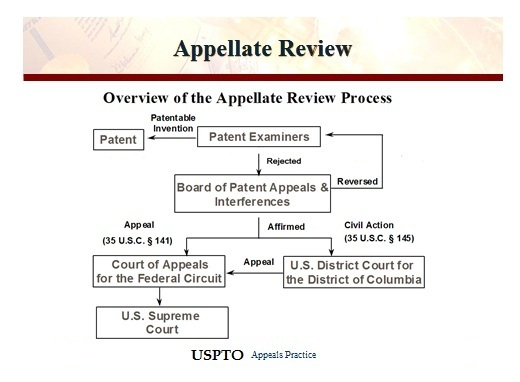

 Salmonella bareilly gram negative
Salmonella bareilly gram negative 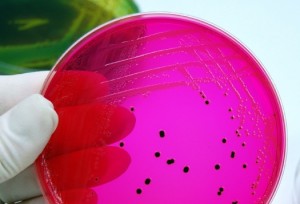
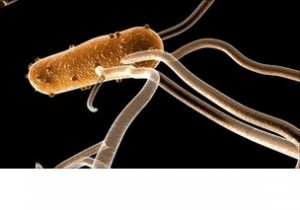 Center for Disease Control
Center for Disease Control 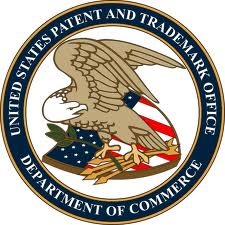 USPTO Expands Patent Law School Clinic Certification Pilot
USPTO Expands Patent Law School Clinic Certification Pilot